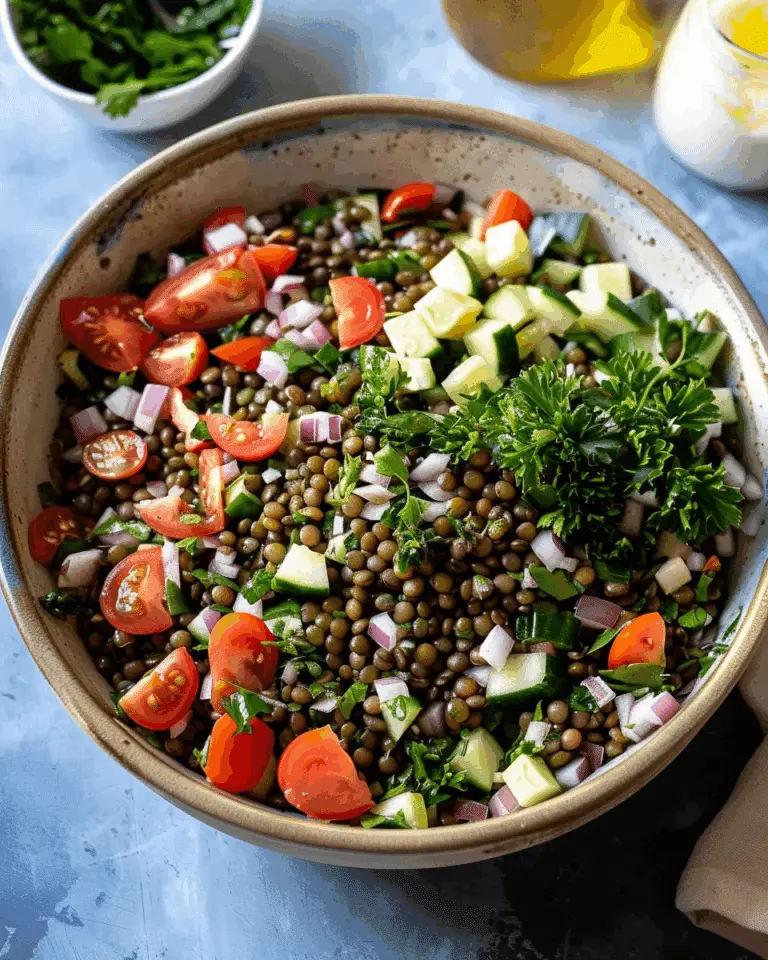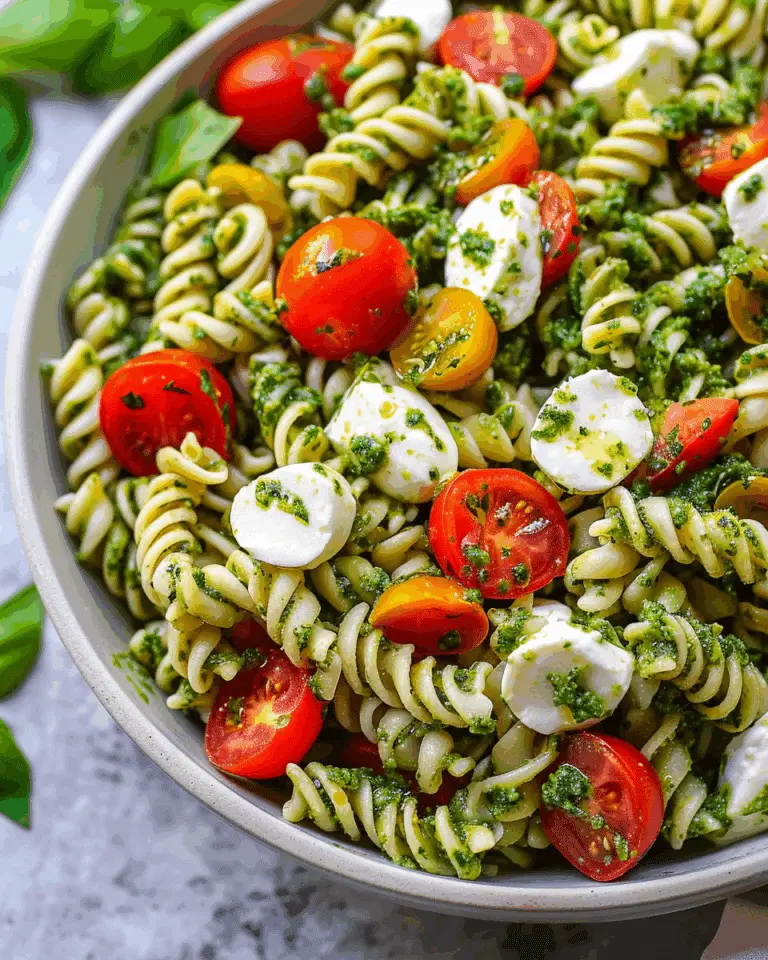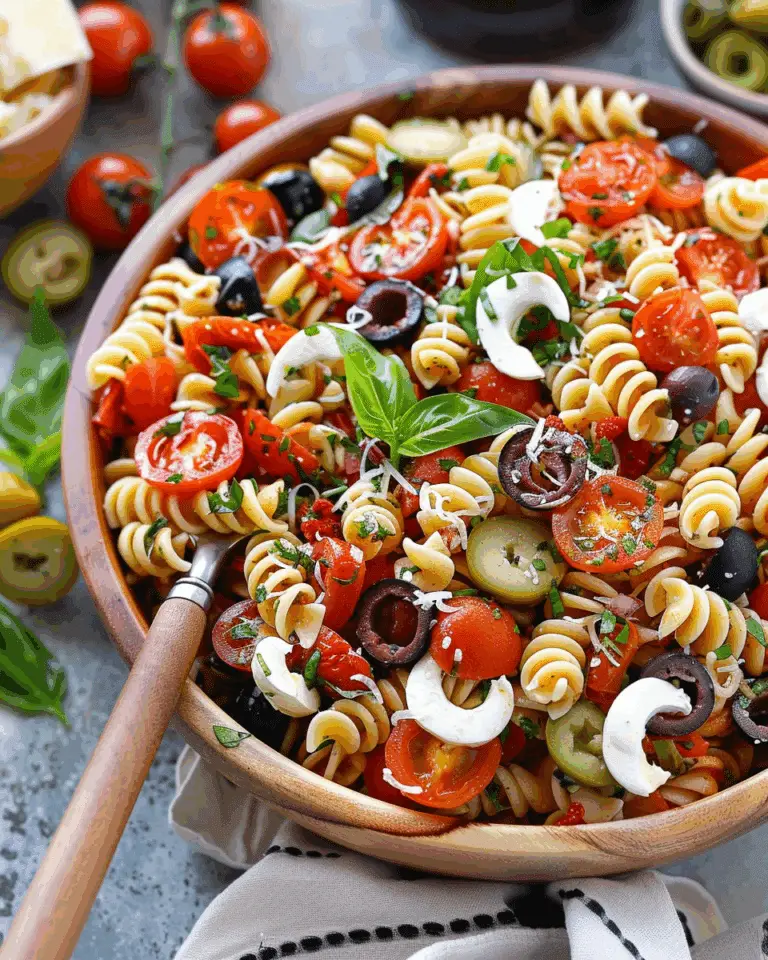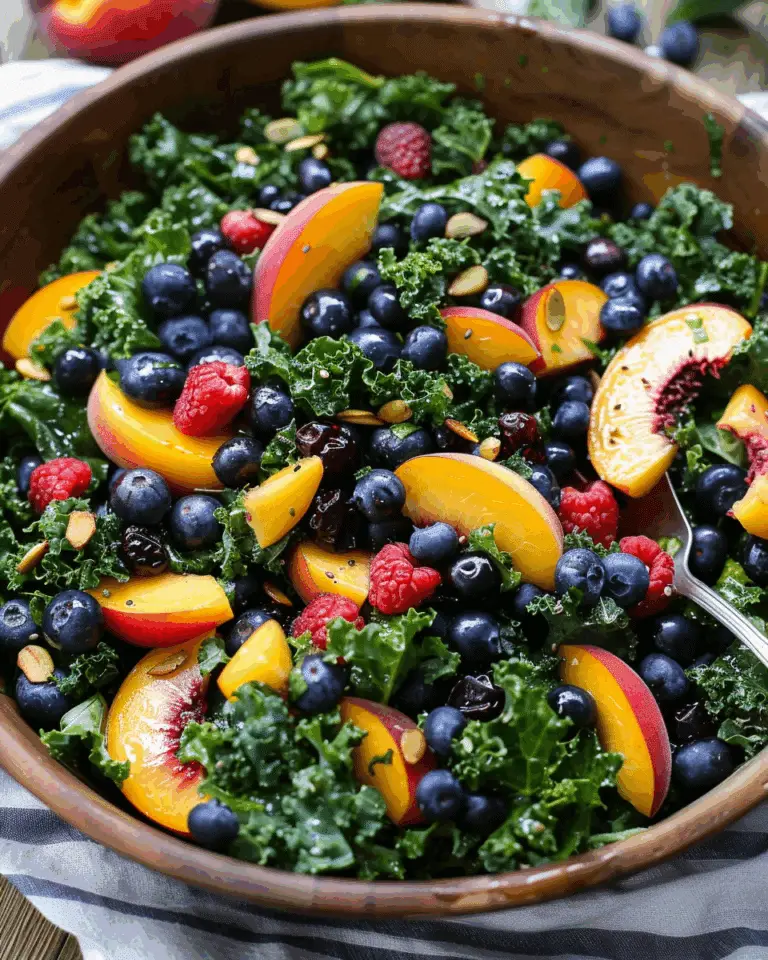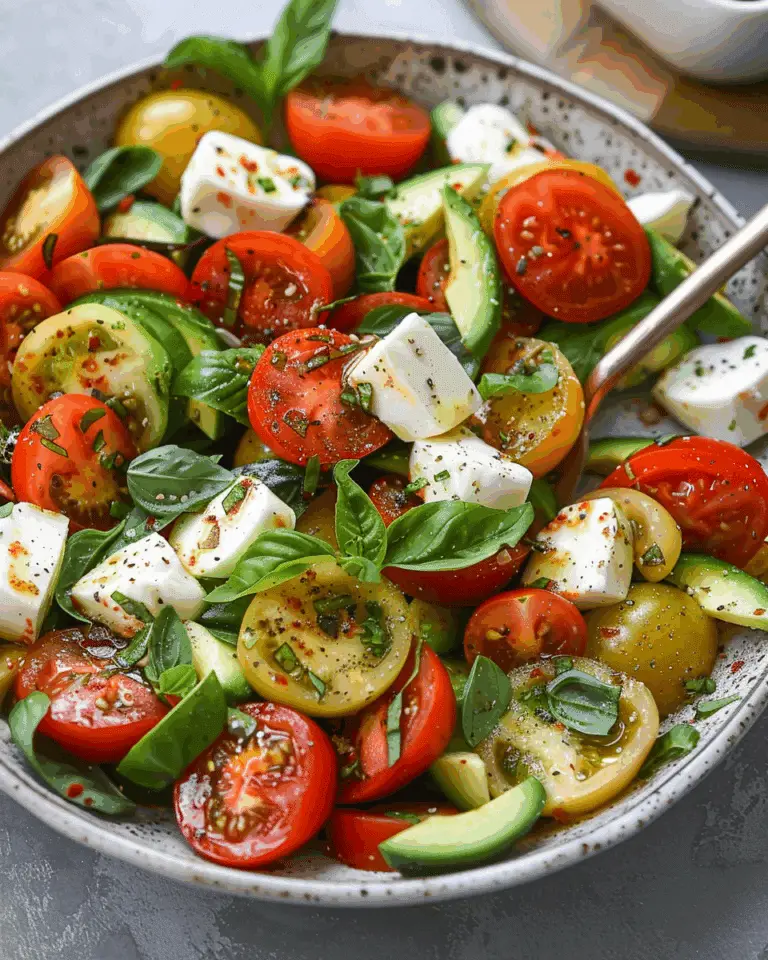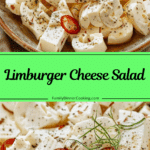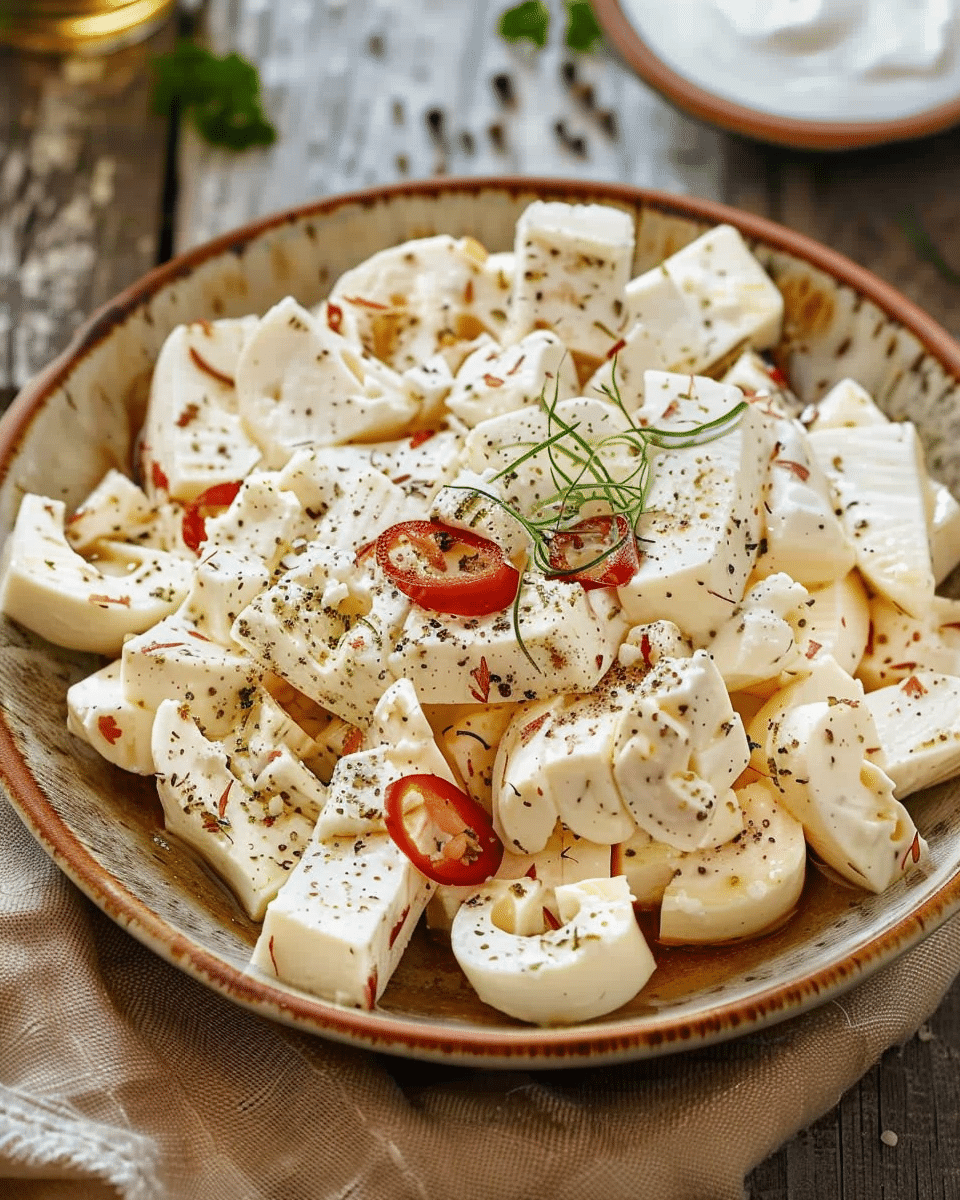
Why You’ll Love This Recipe
- Bold and complex: Though famously stinky, Limburger surprises many with its grassy, earthy, mushroom-like flavors that are richly satisfying .
- Intriguing tradition: Its aroma comes from Brevibacterium linens the same bacterium found on human skin adding a layer of culinary curiosity .
- Perfect pairing: Traditionally matched with strong flavors like hearty rye bread, raw onion, mustard, these combinations create a uniquely balanced bite .
Ingredients
(Tip: You’ll find the full list of ingredients and measurements in the recipe card below.)
The cheese requires:
- Whole milk (not ultra-pasteurized)
- Mesophilic or buttermilk culture (e.g., MM100)
- Geotrichum candidum
- Brevibacterium linens (for rind development)
- Liquid rennet
- Calcium chloride (if using pasteurized milk)
- Salt for brining and rind washing
Directions
- Heat milk and inoculate: Warm milk to approximately 88 °F (32 °C), sprinkle in the cultures (Mesophilic/Buttermilk, Geotrichum, B. linens) and allow to ripen for ~30 minutes.
- Add rennet and coagulate: Stir in liquid rennet and allow the curd to set for about 45–60 minutes until firm .
- Cut and stir curds: Cut the curd into roughly ½–⅝ inch cubes, then slowly stir while gradually increasing the temperature to around 92 °F over 10–15 minutes. Continue stirring for an additional 15–20 minutes until the curds slightly clump together .
- Drain and mold: Let the curds settle under whey, then transfer to molds. Press lightly or simply allow the weight of the curd to consolidate it. Turn the molds regularly over the next hours and drain overnight .
- Brine: Submerge in a saturated salt brine for 1–1.5 hours, seasoning the top as it floats, then turn and re-salt midway. Do not dry post-brining to retain moisture .
- Age and wash rind: Ripen at 58–62 °F with high humidity (~95%) inside a moist aging container. For the first week, turn daily, replace damp mats, and wipe excess moisture. Then begin rind washing with a light brine (optionally with additional B. linens) 2–3 times a week for 1–2 weeks .
- Ripening: Continue aging for several weeks to months until the rind reddens and the interior becomes creamy. Ripening length and wash frequency can be adjusted to control aroma intensity .
Servings and Timing
- Servings: Depending on size, a typical batch yields approximately 2 pounds of cheese .
- Timing:
- Prep and curd formation: ~2 hours
- Draining and molding: ~14–18 hours
- Brining and early aging: 1–2 weeks with frequent rind washings
- Total aging: 2–3 months for full pungent development
Storage/Reheating
- Storage: Keep refrigerated, wrapped in parchment and foil or stored in an airtight aging container to preserve moisture and aroma.
- Shelf life: Best consumed shortly after full ripening though continued aroma and flavor development may occur over time.
FAQs
1. Why does Limburger smell like stinky feet?
Because it is smear-ripened with Brevibacterium linens a bacterium also found on human skin, especially feet which imparts its famously pungent aroma.
2. How does the texture change over time?
- At 1 month: firm, crumbly, and salty (similar to feta)
- At 6 weeks: softening at edges, firm center
- At 2 months: mostly creamy and smooth
- At 3+ months: spreadable with an intense aroma and flavor
3. Can the rind be eaten?
Yes the washed rind is edible and flavorsome, though very aromatic. You can trim it if you prefer less intensity.
4. What are traditional serving methods?
Classic ways include:
- Limburger sandwich: on rye with raw onions and brown mustard
- Limburger salad: marinated in sherry vinaigrette with onions and paprika, often served with pretzels .
5. What can wine I pair it with?
Robust beers and lagers cut through richness beautifully. Belgian blonde ales or saisons with high carbonation are also excellent companions.
6. Where does Limburger originate?
Originally from the Duchy of Limburg (now parts of Belgium, Germany, Netherlands), where it’s also known as Herve cheese in Belgium. Today, Germany is a major producer, and in the U.S., it is mainly produced in Wisconsin.
7. Can you control how pungent it becomes?
Yes. Increasing washing frequency, shortening aging time, reducing humidity, or refrigerating can yield milder results.
8. Why must the cheese remain moist during aging?
Moisture fosters the growth of Brevibacterium linens, essential for rind development and flavor. Too-dry surfaces hinder ripening effectively.
9. Is it difficult to make at home?
Yes. Limburger is considered advanced due to precise temperature control, humidity, handling of pungent aroma, and delicate washing regimen.
10. Will its smell affect other foods?
Yes. Limburger can influence nearby foods with its aroma. Store it separately or tightly wrapped to minimize transfer.
Conclusion
Limburger cheese is a bold, distinctive cheese crafted through a precise ripening and washing process that brings out its rich creaminess and uniquely pungent character. While challenging to make due to its odor and care needs, it rewards with depth of flavor and history perfect for adventurous palates paired with hearty bread, onions . Let me know if you’d like ideas on elegant pairings or milder alternatives!
PrintLimburger Cheese Salad
Limburger is a semi-soft cow’s milk cheese famous for its pungent aroma, creamy texture, and washed-rind character. Originating in the Duchy of Limburg, it develops its distinctive smell and flavor through aging with Brevibacterium linens.
- Prep Time: 2 hours (milk to curd)
- Cook Time: 0 minutes (no cooking, only curd handling)
- Total Time: 2–3 months (including aging)
- Yield: About 2 pounds
- Category: Cheese
- Method: Washed-rind aging
- Cuisine: German/Belgian
- Diet: Vegetarian
Ingredients
- 2 gallons whole cow’s milk (not ultra-pasteurized)
- 1/4 tsp mesophilic starter culture (e.g., MM100 or buttermilk culture)
- 1/32 tsp Geotrichum candidum
- 1/32 tsp Brevibacterium linens
- 1/4 tsp liquid rennet, diluted
- 1/4 tsp calcium chloride (if using pasteurized milk)
- Non-iodized salt for brining and rind washing
Instructions
- Heat milk to 88°F (32°C). Sprinkle cultures (mesophilic, Geotrichum, B. linens) over the milk, allow to rehydrate, and stir in. Ripen for 30 minutes.
- Add diluted liquid rennet and stir gently. Let sit undisturbed for 45–60 minutes until the curd is set.
- Cut curd into ½–⅝ inch cubes. Stir slowly while raising temperature to 92°F (33°C) over 15 minutes. Continue stirring for another 15–20 minutes until curds firm slightly.
- Let curds settle under whey, then transfer to molds. Press lightly or allow natural settling. Turn molds regularly for several hours. Drain overnight.
- Place cheese in saturated brine for 1–1.5 hours, flipping halfway through. Do not dry after brining—keep surface moist.
- Ripen at 58–62°F (14–17°C) with ~95% humidity. For the first week, turn daily and keep mats clean. Then wash rind 2–3 times weekly with light brine, optionally inoculated with B. linens.
- Continue aging for 2–3 months, until rind becomes orange-red and interior creamy. Adjust wash frequency and aging time for desired pungency.
Notes
- Limburger’s strong aroma comes from Brevibacterium linens, the same bacterium found on human skin.
- Cheese texture evolves: crumbly at 1 month, softening by 6 weeks, creamy by 2–3 months.
- Wrap in parchment and foil to contain odor during storage.
- Serve traditionally on rye bread with onions, mustard.
Nutrition
- Serving Size: 1 oz (28g)
- Calories: 80
- Sugar: 0g
- Sodium: 380mg
- Fat: 7g
- Saturated Fat: 4g
- Unsaturated Fat: 3g
- Trans Fat: 0g
- Carbohydrates: 0g
- Fiber: 0g
- Protein: 5g
- Cholesterol: 20mg


